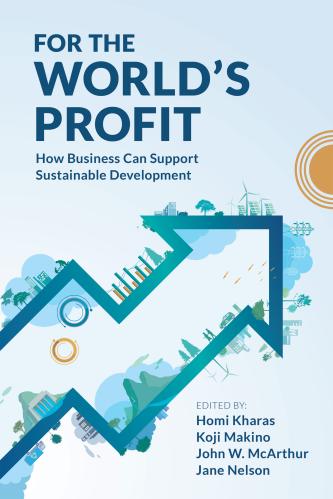The impact of COVID-19 on global energy demand and emissions
The deep COVID-19 crisis has resulted in the largest decline in global energy demand over the past 70 years. In the first quarter of 2020, it decreased by 3.8 percent relative to the first quarter of 2019. As a result, global CO2 emissions in 2020 are expected to fall to an unprecedented level of 8 percent (around 2.6 gigatons) relative to 2019. This would mark the lowest level of carbon emissions since 2010; it would also be the largest reduction to date, six times higher than the previous record reduction of 0.4 gigatons following the 2009 financial crisis.
Figure 1. Impact of COVID-19 on global carbon emissions
Energy-related emissions (gigatons)
Annual change in CO2 (gigatons)
Note: Projected 2020 levels highlighted in red. Other major events are indicated to a give a sense of scale. Sources: IEA Global Energy Review and IEA Carbon Brief.
This drastic cut in emissions is one of the inadvertent consequences of the pandemic, not the result of intentional efforts by governments and businesses around the world to transition to a cleaner energy infrastructure or of their commitment to curb fossil fuel consumption. Experts are already warning that emissions will quickly rebound unless determined action is taken to decarbonize our economies and to achieve the goal set in the 2015 Paris Agreement of limiting global warming to 1.5 degrees Celsius.
A silver lining for the environment?
As governments grapple to reignite their economies, government stimulus packages in several countries, including EU member states, China, the Republic of Korea, and Nigeria, contain direct or indirect support measures aimed at reducing carbon emissions. However, these measures do not go far enough to address the biggest source of greenhouse gas (GHG) emissions, i.e., energy consumption. That would require measures such as heavy carbon taxes or phasing out of fossil fuel subsidies. Without the implementation of such measures, consumers will continue using (low-priced) energy less efficiently, thwarting efforts to mitigate or reverse climate change. This reluctance of governments is partly due to the fear that an increase in energy prices could harm the domestic manufacturing sector.
Is there a trade-off between reducing carbon emissions and the performance of manufacturing firms, particularly in developing countries with large fossil-fuel subsidies? This question is addressed in a working paper using data on manufacturing firms in Mexico and Indonesia, two big developing countries with large fossil-fuel subsidies. We find that increases in energy prices, for example as a result of eliminating fuel subsidies, do not necessarily worsen the performance of manufacturing firms in developing countries.
We examine the impact of energy price variations on both fossil fuels and electricity, the primary sources of energy used in industry and manufacturing. These two energy sources typically power different types of capital equipment, i.e. equipment used to manufacture products. The low fuel price in both Indonesia and Mexico on account of large fuel subsidies means that fuel consumption by domestic manufacturing firms is relatively high. Fuels account for roughly 65 percent of total energy consumption by Indonesian and 68 percent by Mexican manufacturing firms, whereas in France, for example, where fuel prices are considerably higher in purchasing power parity terms, fuels only account for 40 percent of manufacturing firms’ total energy consumption. The electricity prices in both countries lie in the midrange, but are higher than in France. The effects of changes in fuel and electricity prices on the performance of manufacturing firms turn out to be markedly different.
Figure 2. Fuel subsidies in Indonesia and Mexico keep diesel prices low
Raising fuel prices has a positive effect on firms’ performance
An increase in fuel prices actually has a positive impact on the productivity and profitability of manufacturing firms in both Mexico and Indonesia. Higher fuel prices induce firms to scrap old fuel-powered machinery and purchase new electric equipment, which is more productive and energy efficient.
We find that a 10 percent increase in fuel costs leads to a 3.3 percent rise in total factor productivity (TFP) for Indonesia and 1.2 percent for Mexico. Likewise, manufacturing firms’ profitability increases by nearly 1 percent in Indonesia and 0.4 percent in Mexico, because—as already pointed out above—firms start replacing older fuel-powered vintages of capital equipment with more efficient and electricity-intensive ones in response to the fuel price hike (keeping electricity prices constant). Moreover, a 10 percent increase in fuel costs results in a 7 percent increase in energy efficiency in Indonesia, and 2.2 percent in Mexico.
These results reinforce the argument in favor of fuel subsidy reform and carbon taxation, particularly in developing countries, if we are to ramp up energy efficiency and fight climate change. Now is the right time to eliminate fuel subsidies as the costs for consumers and industries would be low in the current regime of low oil prices.
Note: For more detailed information on our study and the data and methodology used, please refer to the World Bank Policy Research Paper 9039 (2019) and UNIDO (2019), Inclusive and Sustainable Industrial Development Working Paper Series, WP 4, UNIDO, Vienna “Too much energy: the perverse effects of low fuel prices on firms.”
The Brookings Institution is committed to quality, independence, and impact.
We are supported by a diverse array of funders. In line with our values and policies, each Brookings publication represents the sole views of its author(s).

















Commentary
To ride COVID-19’s green wave, governments must slash fossil fuel subsidies
November 19, 2020